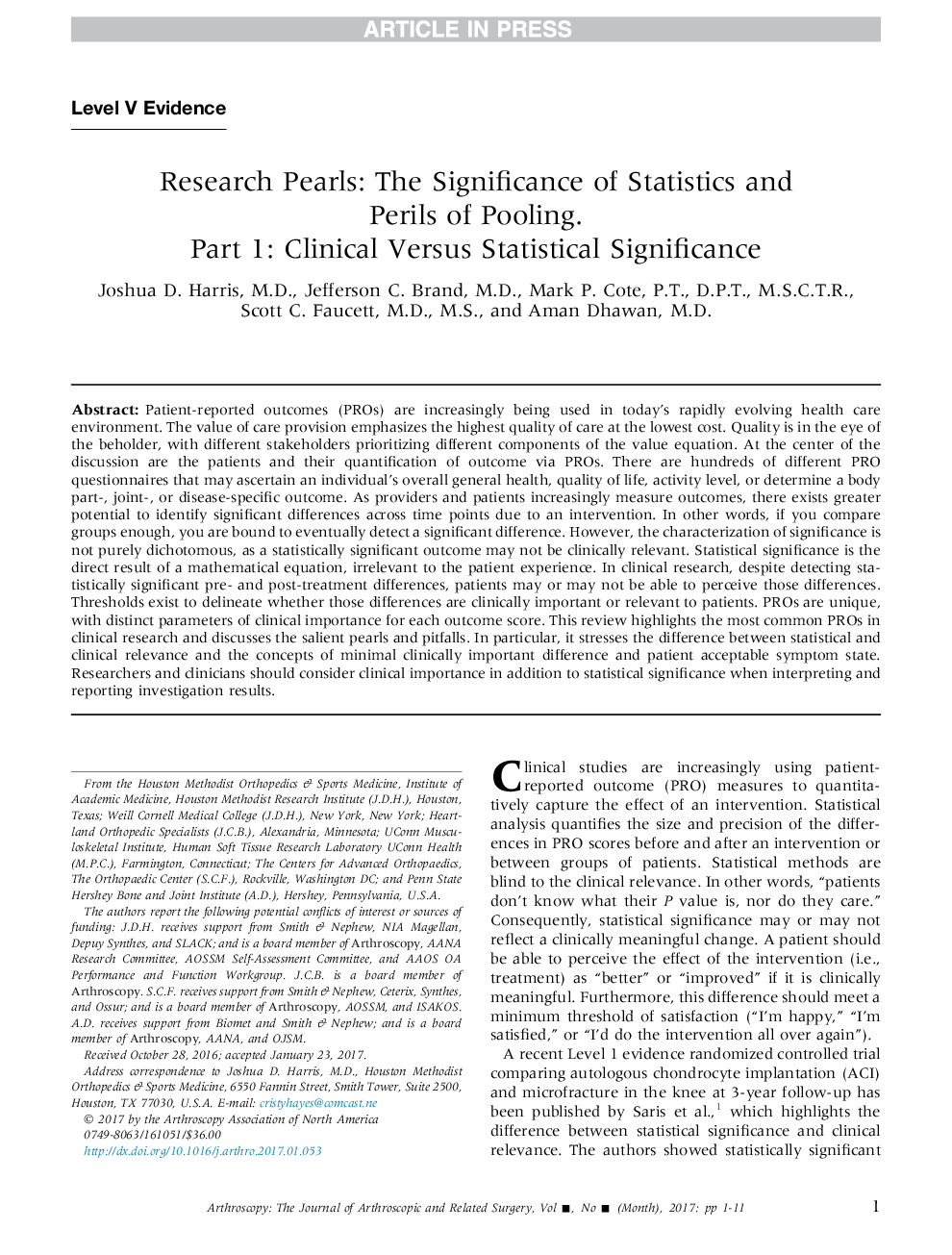| Article ID | Journal | Published Year | Pages | File Type |
|---|---|---|---|---|
| 5706254 | Arthroscopy: The Journal of Arthroscopic & Related Surgery | 2017 | 11 Pages |
Abstract
Patient-reported outcomes (PROs) are increasingly being used in today's rapidly evolving health care environment. The value of care provision emphasizes the highest quality of care at the lowest cost. Quality is in the eye of the beholder, with different stakeholders prioritizing different components of the value equation. At the center of the discussion are the patients and their quantification of outcome via PROs. There are hundreds of different PRO questionnaires that may ascertain an individual's overall general health, quality of life, activity level, or determine a body part-, joint-, or disease-specific outcome. As providers and patients increasingly measure outcomes, there exists greater potential to identify significant differences across time points due to an intervention. In other words, if you compare groups enough, you are bound to eventually detect a significant difference. However, the characterization of significance is not purely dichotomous, as a statistically significant outcome may not be clinically relevant. Statistical significance is the direct result of a mathematical equation, irrelevant to the patient experience. In clinical research, despite detecting statistically significant pre- and post-treatment differences, patients may or may not be able to perceive those differences. Thresholds exist to delineate whether those differences are clinically important or relevant to patients. PROs are unique, with distinct parameters of clinical importance for each outcome score. This review highlights the most common PROs in clinical research and discusses the salient pearls and pitfalls. In particular, it stresses the difference between statistical and clinical relevance and the concepts of minimal clinically important difference and patient acceptable symptom state. Researchers and clinicians should consider clinical importance in addition to statistical significance when interpreting and reporting investigation results.
Related Topics
Health Sciences
Medicine and Dentistry
Orthopedics, Sports Medicine and Rehabilitation
Authors
Joshua D. M.D., Jefferson C. M.D., Mark P. P.T., D.P.T., M.S.C.T.R., Scott C. M.D., M.S., Aman M.D.,
